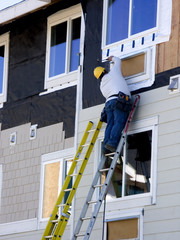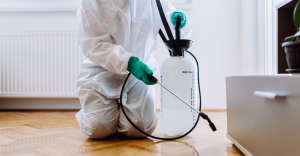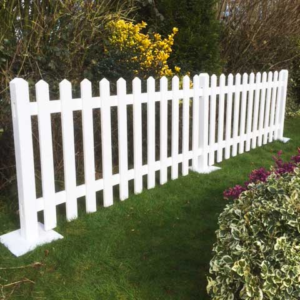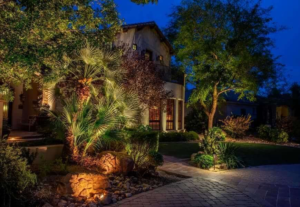Many factors can indicate a need for air conditioning repair, from strange noises to puddles of water or other fluid. If ignored, these issues can worsen and eventually cause major problems and even system failure.
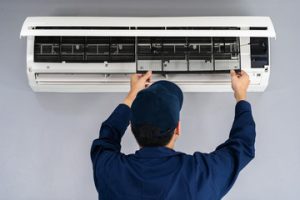
While certain electrical complications like failing capacitors or frequently tripped circuit breakers require professional help, homeowners can often fix minor AC issues themselves. Contact Air Conditioning Repair Round Rock TX for professional help.
The compressor is one of the most vital components in your air conditioning system. Without it, cooling your home would be impossible. It converts refrigerant into a gas that moves through the entire system and cools the air in your home. As with other aspects of an HVAC system, the compressor is subject to wear and tear over time and can experience various problems. Many of these problems are preventable by having regular maintenance done on your system.
The most common AC Compressor issue is refrigerant leaks. These occur when the compressor experiences a loss of pressure in the system. This causes it to work harder than usual and can lead to the unit overheating. This problem can often be prevented by having the air filter checked regularly and cleaning or replacing it as needed. If these troubleshooting tips do not resolve the issue, it’s important to call a professional for repairs.
Another issue that can affect your compressor is mechanical failure. This can include issues with the piston, bearing, or crankcase. This may result in oil contamination and damage to the internal components of your compressor. This can also be caused by excessive vibration, heat, or pressure on the compressor from a lack of proper lubrication.
Electrical issues are also a common reason for compressor problems. These can include issues like corroded wires, contactors, or blown fuses. These types of problems can lead to acid buildup in the system, which is a leading cause of compressor failure. The resulting acid can damage the compressor’s insulation and motor windings, which leads to the need for repairs or replacement.
Dirty Coils are another potential AC compressor issue. When the coils become covered in dirt, grime, minerals, and other debris, the compressor has to work overtime in order to achieve its goal of cooling your home. This can cause the compressor to overheat and can even cause it to fail. The best way to avoid this is by having a professional technician regularly clean the condenser coils to remove these contaminants.
The Blower Motor
Most homeowners have a pretty good idea of what the compressor does, but they might not be aware that the blower motor is another crucial part of their cooling system. The blower motor draws air through the ductwork and distributes it throughout the home. This is one of the reasons why it’s important to change your air filters regularly and have your ductwork cleaned and sealed when needed.
In many cases, the most common sign that the blower motor is beginning to wear out is a noticeable reduction in airflow from the vents. This can be caused by a variety of things, including dirty or leaky ducts and clogged filters. However, if the problem is the blower motor itself, then it could be time to look into a replacement.
Other signs of a blower motor that’s on its last legs include a burning smell, overheating components, or an AC that cycles on and off often without cooling the home. It’s a good idea to schedule a maintenance visit from a trained technician in order to catch issues like loose or broken bearings before they can spread and damage other components in your system.
The technician can also inspect your blower fan cage, test the motor, and lubricate any bearings that need it. They’ll be able to tell whether your motor can be repaired or if it needs to be replaced and recommend the best option for you. They can also take the time to check all of the electrical components, particularly the speed control module which controls how fast the motor runs. This is a very complex procedure and requires the knowledge of a professional who understands how to safely work around electrical components.
The Contactor
Your AC system relies on many tiny parts to function properly, but a single one can throw off the entire machine if it fails. The contactor is a small but crucial part located in the outdoor condenser unit. It works like a switch to control when the compressor and fan motor start and stop. It also helps manage refrigerant pressure and power distribution in the compressor.
Contactor problems often occur when the unit gets stuck in either the open or closed position. When the contactor is stuck closed, it will send constant electricity to the compressor, which can lead to overheating. It can also create a clicking sound or electrical humming when the system is trying to start.
A faulty contactor can also cause the capacitor to burn out. This is because it has lost its ability to hold a charge due to extensive heat exposure. If you hear this sound, call for AC repair immediately.
The contactor can be replaced easily by shutting off power to the AC and removing the wires from it. The replacement part needs to be carefully matched to the existing electrical requirements, so you’ll need to consult an expert for help in this process.
Replacing a failing contactor can help prevent overheating and other issues that may affect the other components in your air conditioner. The repair will also reduce the risk of overworking these other parts by ensuring they don’t have to operate constantly.
Florida living has its perks, but it’s important to stay aware of potential AC issues that can turn your home into a sauna. Our technicians use scheduled inspections to catch these little problems early, so you can avoid costly repairs and save energy. Contact us today to schedule your appointment.
The Refrigerant
Aside from the compressor, your air conditioner depends on refrigerant to function. It is a chemical which can easily transform from liquid to gas and back again, allowing it to carry heat away and cool your home’s air. Air conditioning systems are designed to operate with a specific amount of refrigerant, and if that level is low, the system will break down or not function properly.
Like a jam session, it is important for all components to work in harmony. When one element is out of sync, it puts strain on the whole system, causing problems which are difficult to pinpoint at first. However, those issues can be a precursor to a major breakdown.
In addition, low refrigerant levels can cause the compressor to wear out prematurely, leading to a costly replacement. Low refrigerant also causes your system to work harder, which in turn will cause your energy bills to rise.
The earliest signs of low refrigerant are reduced cooling, ice along the indoor coil, and hissing noises from the AC unit. If you notice any of these issues, shut off the air conditioner immediately and contact an HVAC professional for help.
Having the right air conditioning repair company handle refrigerant issues is essential, as these chemicals are very dangerous to handle. Licensed professionals know how to quickly locate leaks, seal them, and recharge the refrigerant to its factory-set charge. They must be careful not to overcharge it, which is as damaging as being undercharged.
During the repair process, professionals will likely replace your air conditioning’s evaporator coils and condenser coils, as these parts are often damaged by refrigerant leaks. They will also replace the compressor, if it is beyond repair. In the meantime, you can enjoy increased efficiency and lower energy bills thanks to your new and improved AC system. In addition, if your current refrigerant is R-22, it will be replaced with a safer, environmentally friendly alternative such as R-410A. This newer refrigerant has a much lower global warming potential, and it will save you money on your electricity costs as well.
